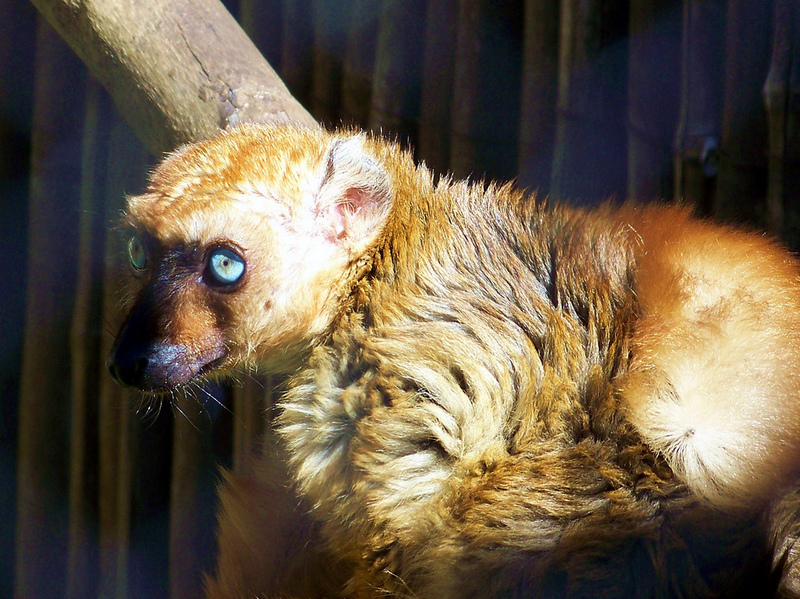|
Blue-eyed Black Lemur (Eulemur macaco flavifrons) - Wiki
| 제목: | Blue-eyed Black Lemur (Eulemur macaco flavifrons) - Wiki
| |

| 해상도: 1024x767
파일크기: 502041 Bytes
등록시간: 2008:01:14 15:45:44
|
Blue-eyed Black Lemur
From Wikipedia, the free encyclopedia
Order: Primates
Family: Lemuridae
[Photo] Blue-eyed Black Lemur (Eulemur macaco flavifrons) - Female at Tsimbazaza Zoo, Antananarivo, Madagascar. Source: Flickr (www.flickr.com/photos/bergeycm/2106744738/). Date: Taken on January 3, 2007. Author: bergeycm (www.flickr.com/photos/bergeycm/).
The Blue-eyed Black Lemur (Eulemur macaco flavifrons), also known as Sclater's Black Lemur, is a subspecies of Black Lemur and, like many other lemurs, is native to evergreen forests and neighboring agricultural land in the northwestern tip of the African island of Madagascar, including the smaller islands of Nosy Be and Nosy Komba. With its strong hands, prehensile tail, and binocular vision, this house cat-sized animal is perfectly adapted for life in the trees. Males are solid black, while females are rusty brown in color. Both males and females have bright blue eyes.
This true lemur is highly social, living in groups of 4 to 20 individuals. Females are dominant, and there are usually more males than females in each social group. Sclater's Black Lemur is probably polygynous. Females give birth to one or two offspring in June or July, after a gestation of 120 to 129 days. The young are weaned after about 6 months, and reach maturity at about 2 years of age. The Blue-eyed Black Lemur may live 20 years or more in captivity.
Sclater's Black Lemur communicates by scent marking, posture, and a diverse array of vocalizations, including chirps, shrieks, and yodels. The loud calls of this prosimian can be heard from over a mile away.
Fruit, pollen, and nectar make up the bulk of this lemur's diet. Insects, leaves, flowers, and seeds may also be eaten, especially during the dry season, and it may also raid farm fields and eat human crops.
The Blue-eyed Black Lemur helps propagate many rain forest plants. Since it digests the flesh but not the seeds of the fruits it eats, it spreads the seeds of more than 50 different plant species (deposited in a fresh pile of fertilizer), and some plants may have evolved specifically to be dispersed by this lemur. Sclater's Black Lemur also pollinates many plants while it eats nectar and pollen from the plants' flowers.
Humans have cut down almost all of this species' habitat to clear farm land, and also hunt this lemur for meat and to protect crops. As a result, the Blue-eyed Black Lemur is nearly extinct in the wild. The Blue-eyed Black Lemur subspecies is listed on Appendix I of CITES, and is critically endangered (IUCN Red List). As few as 100 individuals are left in the wild, due to nearly complete destruction of its habitat and extensive hunting as a crop pest and for the bush meat trade.
http://en.wikipedia.org/wiki/Blue-eyed_Black_Lemur
| The text in this page is based on the copyrighted Wikipedia article shown in above URL. It is used under the GNU Free Documentation License. You may redistribute it, verbatim or modified, providing that you comply with the terms of the GFDL. |
|
^o^
동물그림창고 똑똑전화 누리집
^o^
|
|